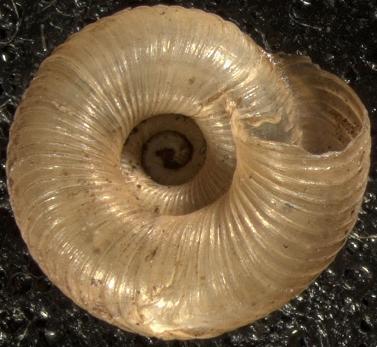Interactions
In addition to the interactions with predators and other organisms found in the same habitat, Discus cronkhitei also encounters something else: the parasite Parelaphostrongylus tenuis (Meningeal Worm).
According to the Michigan DNR, this nematode parasite is found in white-tailed deer primarily, but they also infect moose, elk, caribou, mule deer, goats, and sheep to name a few. These parasites have a complex life cycle in the deer including time in the dura mater (brain), lung, circulatory system, and digestive tract. The important part is how they effect the snails, though. After being excreted in feces of the deer, snails and slugs feed in the area and become infected with the parasite. The larva of the parasite develops in the snail until the snail is accidentally eaten by another deer that is grazing. Then the cycle repeats.
Luckily for humans, this parasite has no effect on them. Even if humans eat meat that is infected by the parasite, they will not get infected. Moose, however, are greatly effected. It has been suggested that this parasite, whose secondary host is the snail, has led to the decline of the moose population in North America and is part of the reason that moose can't be established in areas with large white-tailed deer populations (Michigan DNR).
Want to learn about Reproduction
of Discus cronkhitei?
Or go to the Home page.